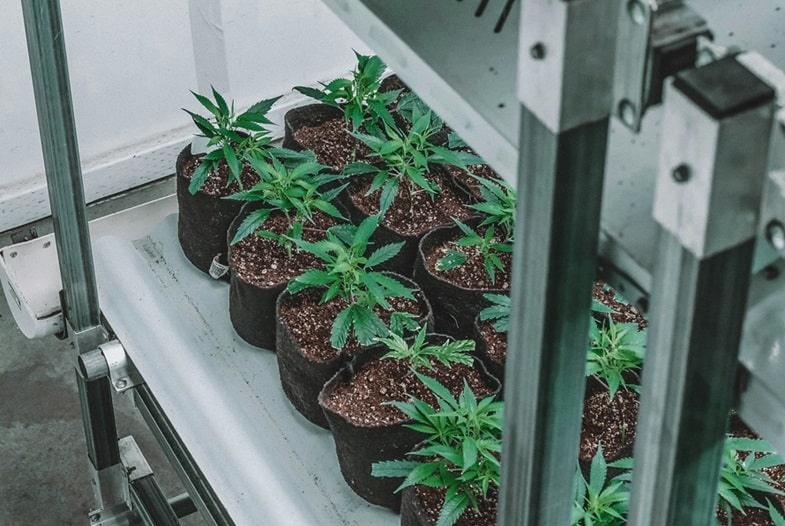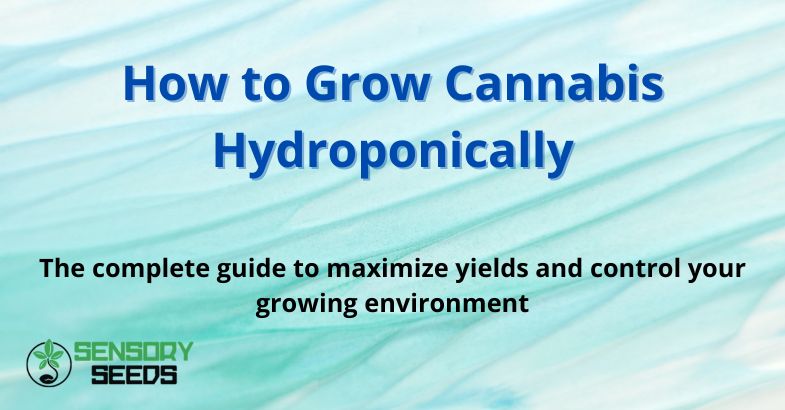Published on: 22/11/2024
The complete guide to maximize yields and control your growing environment
While it may seem complex, hydroponics offers numerous advantages for growing cannabis, but like any technique, it also has some drawbacks to consider.
In this article, we’ll dive into the process of cultivating cannabis seeds using a hydroponic system, analyzing the benefits, drawbacks, and key factors to consider for a successful harvest.
What is Hydroponics? Introduction to the Cultivation Method
Hydroponics is a method of growing plants without using soil. Instead of soil, the plant roots are submerged in a liquid solution containing all the necessary nutrients for growth. The basic concept is that the roots have direct access to oxygen, water, and nutrients in a way that allows plants to absorb exactly what they need more efficiently than in traditional soil-based systems.
There are several hydroponic systems, each with its own characteristics and levels of complexity. The most common include:
- NFT (Nutrient Film Technique): plant roots are kept in a thin layer of nutrient solution that constantly circulates, providing a continuous supply of nutrients and oxygen.
- DWC (Deep Water Culture): roots are submerged in a water reservoir that is constantly aerated, maintaining high oxygen levels.
- Aeroponics: in aeroponic systems, plant roots are suspended in the air and sprayed with a nutrient solution at regular intervals.
- Wick System: one of the simplest setups, where plants absorb nutrients through a series of wicks that transport the solution from the reservoir to the roots.
These systems offer various opportunities to customize cannabis cultivation, allowing growers to choose the most suitable approach based on space, available resources, and the grower’s experience level.
Read also: Cannabis seed germination guide


Advantages of Hydroponic Cannabis Cultivation
One of the main advantages of hydroponics is the precise control over the plant’s growing environment. When growing cannabis in soil, the soil itself can vary significantly in terms of composition, nutrients, and overall quality. In a hydroponic system, the grower can monitor nutrient levels in the solution with precision and make real-time adjustments to optimize growth. This leads to greater predictability and faster plant growth. Thanks to direct access to nutrients, plants don’t need to extend their roots in search of resources; instead, they can focus on vegetative growth and flowering.
In addition to accelerated growth, another major advantage of hydroponics is higher yields. Plants grown in hydroponics generally produce 30-50% more biomass compared to soil-grown plants, making this method particularly attractive for those looking to maximize harvests in a limited space. This is especially important in cannabis cultivation, where productivity per square meter can make a big difference.
Another positive aspect of hydroponic cultivation is water conservation. Unlike traditional soil-based cultivation, where much of the water disperses into the soil or evaporates, hydroponic systems recycle and reuse water more efficiently. This is especially useful in arid regions or in contexts where water is a limited resource.
Finally, hydroponics eliminates the problem of soil pests and diseases. Since plants are not grown in soil, they are less susceptible to soil-borne pathogens, such as fungi or nematodes, reducing the need for pesticides and other chemical treatments.
Disadvantages of Hydroponic Cannabis Cultivation
Despite the numerous advantages, hydroponics is not without its disadvantages, especially for beginner growers. One of the main drawbacks is the initial cost. While hydroponic systems can be more efficient in the long term, the initial investment in equipment such as reservoirs, pumps, grow lights, and ventilation systems can be considerable.
Managing the system’s complexity is another challenge. Unlike traditional soil cultivation, where soil acts as a natural buffer to regulate nutrient and pH levels, in hydroponics the grower must constantly monitor these parameters. If pH or nutrient levels get out of balance, plants can become stressed or even die in a short period of time, due to the lack of natural substrate protection.
Another downside is the reliance on technical systems and electricity. If power outages or technical failures occur, like a broken pump, plants can quickly suffer. This makes regular maintenance and backup systems essential to prevent disasters.


Hydroponics vs. Traditional Cultivation: A Direct Comparison
When comparing hydroponics to traditional soil cultivation, the pros and cons of each method stand out clearly.
On one hand, hydroponic cultivation offers faster growth, greater control, and superior yields, while soil-based cultivation is generally easier to manage and requires less expensive equipment. However, the quality of the final product largely depends on the grower’s skill and attention to the growing environment.
How to Start Growing Cannabis Hydroponically
Starting a hydroponic grow requires careful planning and the right equipment. In addition to reservoirs, pumps, and lights, proper ventilation systems and tools for monitoring nutrient and pH levels are essential. Choosing the right hydroponic system will depend on your needs, available space, and technical skills.
Conclusion
In conclusion, hydroponic cannabis cultivation can offer extraordinary results in terms of growth and yield, but it also comes with significant challenges. Assessing your goals, budget, and skills is essential to determine if this method is right for you.
If you’re looking for the best cannabis seeds to start your growth, we invite you to visit Sensoryseeds, where you’ll find a wide selection of premium quality seeds. Plus, our blog offers a wealth of useful information to help you grow and thrive efficiently. Take your cultivation to the next level!









